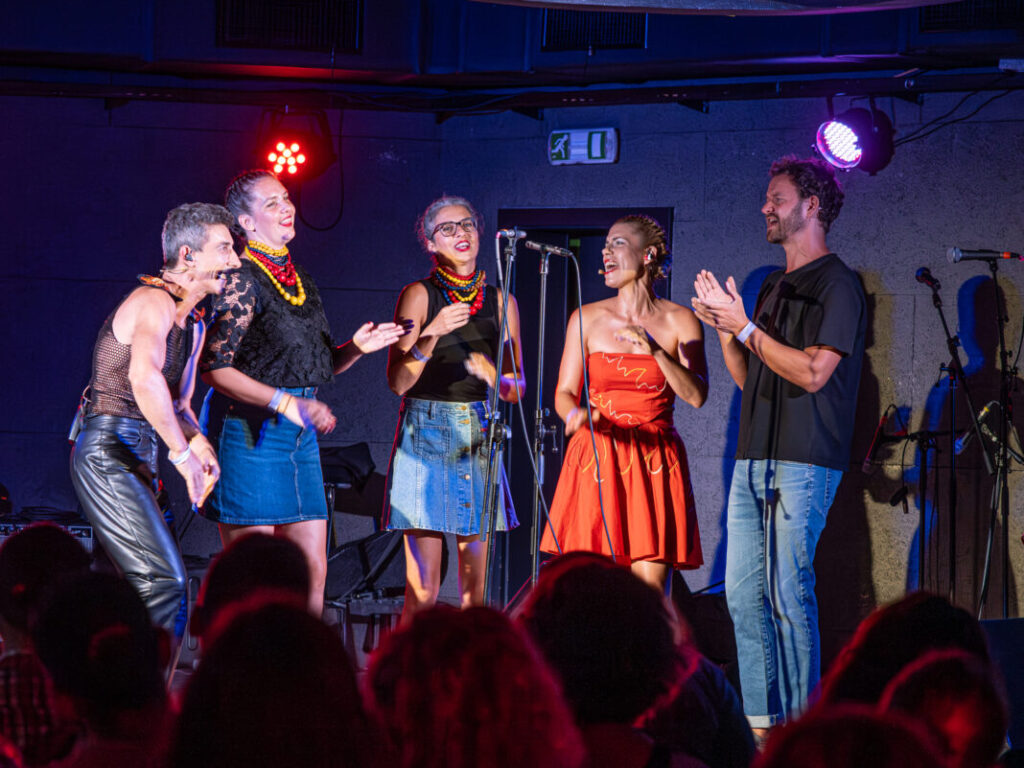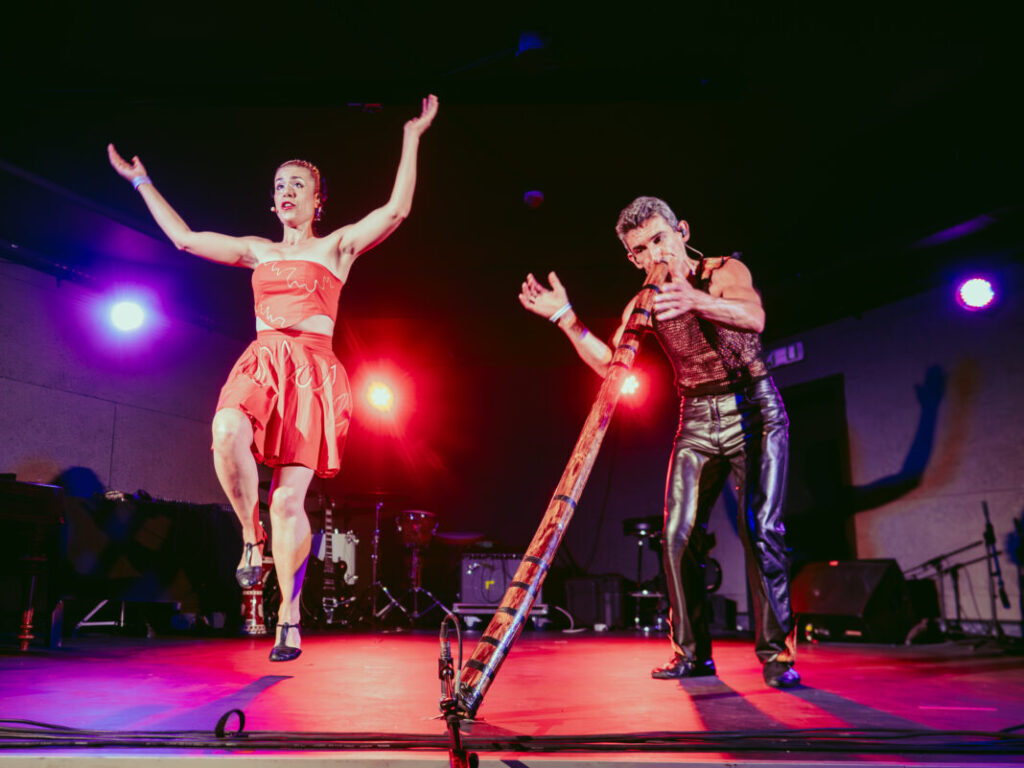Alice in WonderBand showed off a fascinating musical-dance spectacle, the Italian trio Suonno d’Ajere presented the poetics of the Naples song and the Hungarian band Ötödik Évzzuk a combination of folk music and chanson. In Europe, we can find immense musical wealth that literally calls for new connections – and they were presented at the World Music Festival in Bratislava.
We got a great review from Zuzana Vachova (Moja kultura SK) for the showcase performance at the World Music Festival Bratislava. Here is an excerpt, translated to English.
Alice in WonderBand were the first to perform. The visual, movement, singing and musically attractive duo from Serbia first presented the Czech vocal quartet Milanosz. The vocal group focuses on songs from different parts of Europe. When one hears them, one realizes how diverse the influences that we can find in Slavic chants can be. In particular, the throat singing, and phrasing of the termination of the melodic line with one woman’s nasal voice. There were also intervals that may seem distant from Slovakian culture, even exotic.
Photo: Rudolf Baranovic, mojakultura.sk
Likewise, the rhythm of the lyrics used the odd metrics – we heard it especially during a joint performance with Alice in WonderBand. The audience also spontaneously started to clap in the rhythm – it is one of the typical elements of the Serbian duo. They immediately and naturally draw the audience into the process. The psychological effect of modulation of the singing, which constantly increased in one tone interval, strengthened the feeling of gradation of the song, proving even vocal groups can work extremely effectively – they don’t even need musical instruments to reach the feeling of rich sound.
Ana Vrbaški and Marko Dinjaški – this pair filled the podium and magnetized the audience. Life and music partners have been touring together for over 27 years, so they know exactly how to work with rhythm and how to engage the audience in music. In addition to forming an immensely sympathetic couple, they are matched in every single movement, tone, rhythm and overall expression. However, it is not a calculus, nothing in their performance is overly technical or calculated. Their attraction lies precisely in the mutual harmony they transmit to the audience. They represent the music of Macedonia, Bulgaria, Serbia, Romania, Albania, Croatia, Bosnia and Herzegovina, they even have a Hungarian song or Turkish and Greek song in the repertoire. They discover new connections in the music of individual countries and regions in the thoughtful concept crowned by the body music technique. The body is used as a percussive musical instrument combined with singing, but their performance brings significantly more in addition to these elements.
Photo: Rudolf Baranovic, mojakultura.sk
The individual songs presented at the World Music Festival in Bratislava were a synthesis of singing, music, dance, movement on stage – all ingeniously directed. Their performance was a theatrical performance, with distinctive visual elements of the artists themselves. The glowing red colour of the singer’s dress, her overall image and her partner, dressed in black, concentration on the rhythm, almost a ritual character of many songs, their authentic interpretation in singing and dance choreography seemed spectacular. Especially in the moments of the composition, when the rhythm was limited to the basic clapping. The song from Macedonia created these contrasting surfaces, but also the rhythmic elements and the overall sound that distinguishes it from the Balkans. There were combinations of metro-rhythmic structures and characteristic extensions of the last notes of the phrasing.
The song from Bosnia Mene majka jednu ima, in which the influences of different cultures were heard, engaged the audience and performers. The clapping of the rhythm became a means of communication. Although Alice in WonderBand try to free the music and highlight its purity, inside the structure, outside the basic rhythms (which were also applauded by the audience), they use complicated elements and solos. The singer Ana showed the richness of her vocal in various registers, colours, but also sounds that were approaching nature. In some songs, this closeness was clearly shown, they were narrative compositions that tried to get as close as possible to the authentic expression of the region and countries. Also, scats enriched the free parts of the songs, which had an improvisational character. The singer’s range is admirable. From deep velvety lower tones to pure heights – in various expressions, they were confident and convincing in her performance.
The music of the Balkans has a rhythm that may initially seem like a new element that one concentrates on in order to capture and may cause difficulties, but the performance of Alice in WonderBand was complex, engaging in other components as well. Sure, the rhythm was primary, but the expressive singing, the movement on stage, the difference in sound surfaces, the way this duo was able to create tension in the music, created an amazing theatre. In the end of their concert they performed the ballad Ruse kose, which many nations have in their own version. As a rule, their interpretation pay attention to contrasts in tempo, which are distinctive. That’s how the duo approached it. By dancing as a pair, they emphasised the song’s intimacy – it was a dance full of tension and harmony at the same time. However, they did not move into the pop sphere in the rendition of this song – you can often hear it in pop arrangements and then it loses its character.



